Who can see your post?
Your post will show up in News Feed, on your profile and in search results.83,255 Global Browne Family Members
| Days | Hours | Minutes | Seconds |
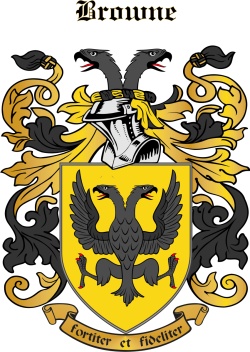
Sunday 6th April
2pm (New York), 7pm (Ire)
Our digital global family gatherings
Wales' First Minister Family Message
Our TEDx talk about family gatherings
Browne Family History
Le Brun - Norman French, Gaelicised to De Brún, and anglicised to Browne. Meaning 'brown haired or complexioned'.
The most well known family of the name in Ireland, was one of the 'Tribes of Galway', a city fraternity of Norman tribes, which included just one Gaelic Irish family.
The Mayo Brownes are probably related to the above, though bearing distinct arms. They became very influential, collecting titles: Barons of Kilmaine, Earls of Altamount and Marquises of Sligo.
The Brownes of Killarney, the Earls of Kenmare, are descended from a later Elizabethan English settler; they again bear distinct arms. An earlier Norman family of Browne in Co Kerry should be given precedence, however; the place name Dunbrowne being named after them.
The Brownes of Camus, Co Limerick were an old Norman family, who distinguished themselves in the military sphere, serving as high ranking soldiers in the armies of Great Britain and Continental Europe (see below).
Browne of Co Wexford, were also of ancient lineage; their lands were forfeited after the 1641 Rising.
However, it should be noted that there is also the Gaelic surname, Mac an Bhreithiún, which is given in English as 'Brown' in 'An Sloinnteoir Gaeilge' (Muiris Ó Droighneáin, 2001 etc) The surname means 'son of the brehon (judge)' .Woulfe in 'Irish Names and Surnames' (1923) says that the name was common in Connacht and west Ulster. There is also a Scottish Gaelic surname with the same derivation, according to Woulfe, which is anglicised as Browne. This is borne out in the '1659 Census' returns for Co Down, below, where the forms are clearly Gaelic.
In Petty's '1659 Census' Browne is found as a 'Principal Irish Name' in the following counties (numbers in brackets): Co Galway and Mayo returns missing; Limerick, Costlea Barony, Browne (9); Wexford, Bargie Barony, Browne (12); Bantry Barony, Browne (7): Shelburne Barony, Browne (10): Donegal, Raphoe Barony, Browne (9): County of Down, McBruine (7); Iveagh Barony, McBryne (12) and McBrin (10); Lower Iveagh, McBrinn (20).
By the mid 19th century, Browne is recorded in Griffith's 'Primary Valuation' with highest numbers in the following counties: Mayo (264) Down (263) Cork (208) Wexford (203) Tyrone (198) Derry (191) Limerick (166) Galway (160).
Brown occurs highest in counties: Down (224) Cork (122) and Tyrone (110)
Two Famous Brownes:
Philippus le Brun, according to legend, came to Ireland in 1170, and, in 1172, was appointed Governor of Wexford. A son, William, settled in Clanmorris, County Kerry, and another, Walter, settled in County Galway.
George (1698-1792) Count von Browne, of the Holy Roman Empire, was a Field Marshall in the Russian Service. He was a Limerick man.
Browne Family of Wexford
MULRANKIN and Rathronan castles, near Bridgetown in Kilmore parish (Bargy), were the principal seats of the Browne who were among the chief Norman families to settle in south Wexford. They were known then as le Brun, denoting brownish hair or complexion. In later times they built other castles at Brownescastle (near Taghmon), Brownswood (near Enniscorthy), Greyrobin (near Tomhaggard) and Ballyfistlane (near Our Lady's Island).
The first of the family to arrive in Ireland with the Normans was Sir William le Brun who with his son Nicholas witnessed an 1175 charter for the establishment of Dunbrody Abbey in the present parish of Horeswood, barony of Shelburne.' Between 1207 and 1211 Nicholas witnessed the charters of William Marshal to Dunbrody and Tintern.? Another Nicholas was in possession of Mulrankin in 1297.
Sir Nicholas Brun of Mulrankin was High Sheriff of Co. Wexford in 1365 and Sir Walter Browne was Seneschal of the county 1521. Walter's grandson, Robert Browne, is referred to in a letter to Queen Elizabeth in 1572, as a young gentleman of great valour, upon whom his father had valiantly built a fortress, being also of near blood to our cousins, the Earls of Kildare and Ormond, traitorously murdered by the Kavanagh's. Robert was killed in an attack on Mulrankin Castle by the Irish chief, Brian McCahir Kavanagh on April 21, 1572.
Robert Browne had two brothers, William, Sheriff of Wexford in 1585, and Walter, of Newbawn who was pardoned in 1577. William was succeeded at Mulrankin by his son Patrick who married Honora Barry, daughter of David Fitzjames Barry, Viscount Buttevant. Patrick's brothers were Nicholas of Browne's Castle (Taghmon) and Robert of Ballycapogue (Mulrankin).
Patrick Browne's three sons became officers in the Confederate Catholic Army in the 1640s - Col. William, Col. John and Lieut Walter Browne. William was taken prisoner at the Battle of Dungan's Hill, Co. Meath, in 1647. His estates were confiscated, and he escaped to France. Though he was ordered in 1660 to be restored by the King's Declaration, having served under Charles II's ensigns abroad, this proved ineffective, as the new Cromwellian grantees could not be removed.
All the Browne lands were forfeited on account of the family's participation in the rebellion of 1641. In the Cromwellian confiscations that followed, they were granted to William Ivory, John Cliffe and John Annsloe, but they were all acquired by John Cliffe who was secretary to General Henry Ireton, Cromwell's deputy in Ireland.
In 1851 the Brownes regained possession of Rathronan as tenants of Anthony Cliffe until 1903 when Kathleen Browne's father acquired it under the Wyndham Land Purchase Act, thus restoring to the family part of the property granted to the first Norman Brownes some 700 years before. It has continued in the possession of descendants of the Brownes to the present day.
According to the family historian, Kathleen A. Browne, Rathronan, these Brownes had several sisters, one of whom married Grogan of Johnstown Castle, and another married the Cromwellian William Ivory to whom Rathronan had been granted : their descendants called IvoryBrowne died out in 1820.
Kathleen Browne explains that it was a favourite policy of the Cromwellian grantees to marry the ladies of the families which were dispossessed, in order to give themselves and their families a standing in the eyes of the people, and 10 prevent them being looked upon as usurpers or upstarts.
She traced the surviving line of the family (still in possession of Rathronan) from Colonel John Browne who married Anne Devereux, daughter of James Devereux, Ballymagyr. Her account says that John was only thirty years old when he was killed by a party of Cromwellian soliders who had been ordered to reduce the castles of Forth and Bargy after the fall of Wexford town in 1649.
John's wife died at the birth of their only son William who was reared among friends. On his marriage he settled in Loughgunnan, in the parish of Mayglass. He died in 1721, aged 72 years, leaving five sons and two daughters. Two sons died young and two daughters died unmarried. The older sons were Michael, William and Patrick. Michael settled at Harpoonstown, near the manor of Mulrankin, and from him are descended numerous families in the Barony of Forth and Bargy. He died in 1767, and is buried in Mayglass cemetery. His grandson, John Browne, settled in Bigbarn, Mayglass, and was father of Most Rev. Dr. James Browne, Bishop of Kilmore (Cavan) (1827-1865). The bishop had been curate in Newtownbarry (Bunclody) for more than a year before being appointed sub-Dean in Maynooth College in 1814.
Most Rev. Dr. James Browne, Bishop of Ferns (1884-1918) also born in Mayglass, belonged to the same family. He was parish priest of Piercestown before being appointed bishop.
The Browne family memorial in Mayglass cemetery bears the following inscription: 'To the memory of the members of the family of Browne of Mulrankin, Rathronan and Oldhall, who between the and eighteenth centuries were interred in St. David's Church, Mulron and whose tombs were demolished in 1777, this monument is erected by their descendants.'
Rathronan was occupied for a time by a family named Jeffare tenants of the Cliffes. It was they who, during the eighteenth took the top off the castle and roofed it down. The Brownes als the original church at Mulrankin which was dedicated to St. Dau Kathleen A. Browne, who died in October, 1943, was a member of Seanad Éireann from 1929 to 1938. She was an ardent nationalist and devoted much of her time to the study of the history of County Wexford Her booklet on this subject was adopted by the Department of Education for schools. During Easter Week, 1916, she flew the tri-colour from Rathronan Castle for which she was arrested and imprisoned in Waterford. She was prominent in the Blue Shirt movement of the 1930s. Her father Michael Browne, was a member of the first Wexford County Council, an extensive farmer and merchant in Bridgetown.
The noted Dublin Psychiatrist, Dr. Ivor Browne, is a lineal descendant of the original Brownes of Mulrankin, and a nephew of Kathleen A. Browne. Another notable bearer of the name is Sean Browne, a former T.D., for Wexford and Leas Ceann Comhairle of Dail Eireann. For many years he was Chairman of the Wexford County Board of the Gaelic Athletic Association (G.A.A.). His nephew, John Browne, was elected to succeed him in the Dail.
A distinguished churchman in recent times was the late Right Rev. Mongr. James Canon Browne, Vicar General of the Diocese of Ferns and parish priest of New Ross at the time of his death. The present (1986) parish priest of Tagoat is Rev. Patrick Browne. A former Town Clerk of Wexford for fifty years was William A. Browne who died in 1931. James Browne, the proprietor of a licensed premises at Bishopswater. Wexford, is a former president of the Wexford Chamber of Commerce, and a noted singer. In 1939 he secured first place in Ireland in the Count John McCormack 'New Voices' competition for basses and baritones, which was broadcast on Radio Eireann. John Browne of Millquarter, Old Ross, is one of the last of the old style corn millers in the county and a member of Wexford County Council. His son Bernard Browne is a well known historian and was the chairman of the Wexford Historical Society prior to his emigration to the United States.
Select Audience
-
Public
Anyone on or off Wales101 -
Friends
Your friends on Wales101 -
Specific
Only show to some friends -
Only me
Only you can see your post
Tag People
-
Kane William
-
John Micky
-
John william
-
John Smith
-
John
Create Life Event

Simone Hassett

Raymond Charles Brown

Karel

Karel

Browne

Browne

Browne

alexbrowne
Areas of Origin for Browne
Invite more Browne family members!
Write an email address and click 'Invite' to share this page with more members of the Browne tribe.
Log in or Register to invite others
Family Coat of Arms Generator

Why not see what your family crest could look like based on your own family characteristics?
Create CrestJoin the Irish Learning Rooms
Show off the Browne Family Crest…
Wear your crest with pride...plenty of products to choose from


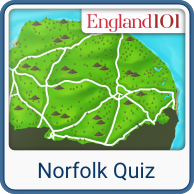
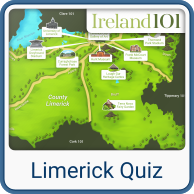
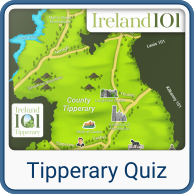

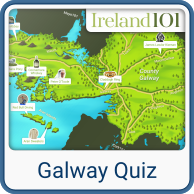
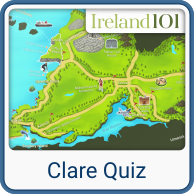

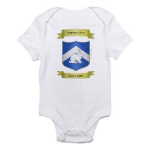


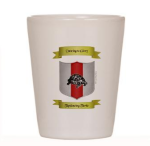
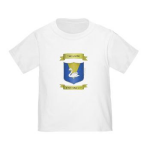
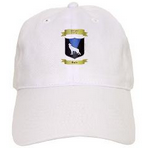
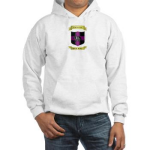
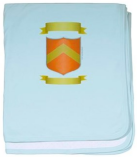
_(2).jpg)